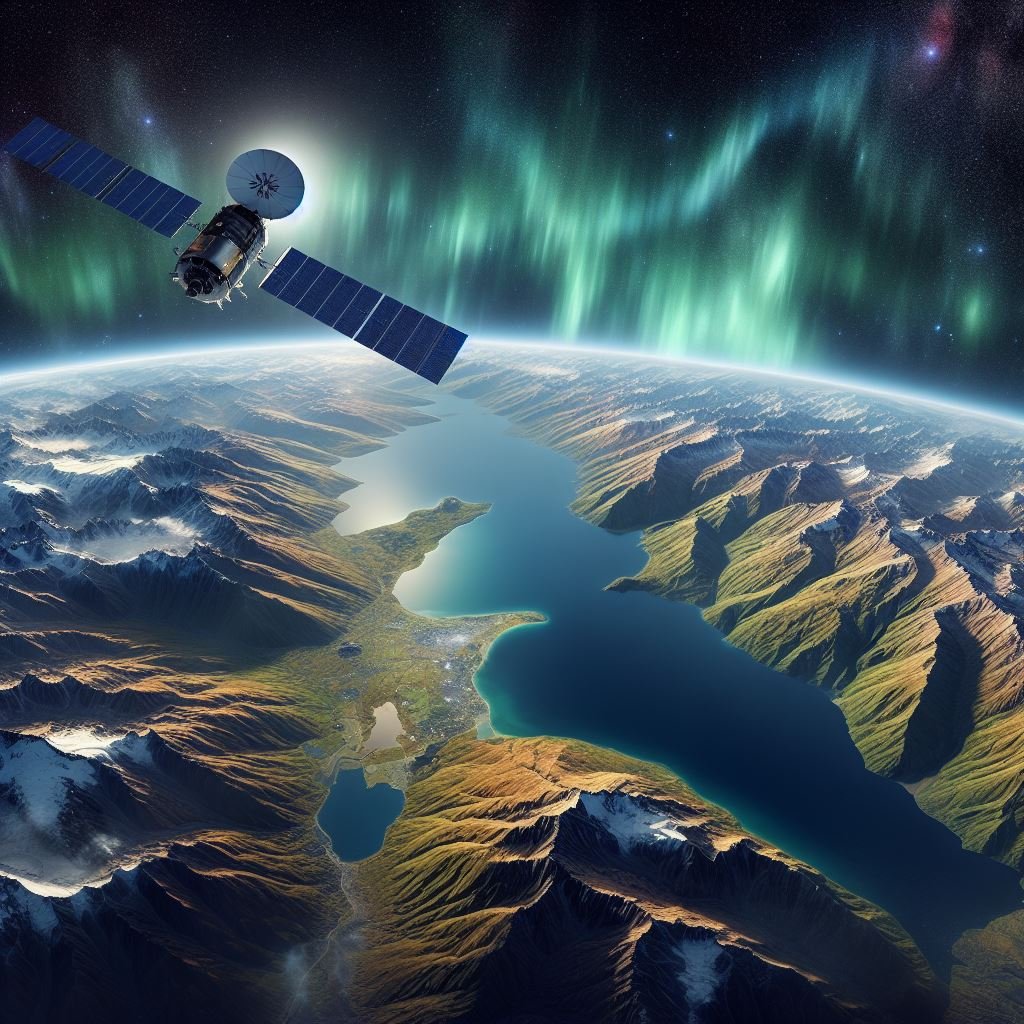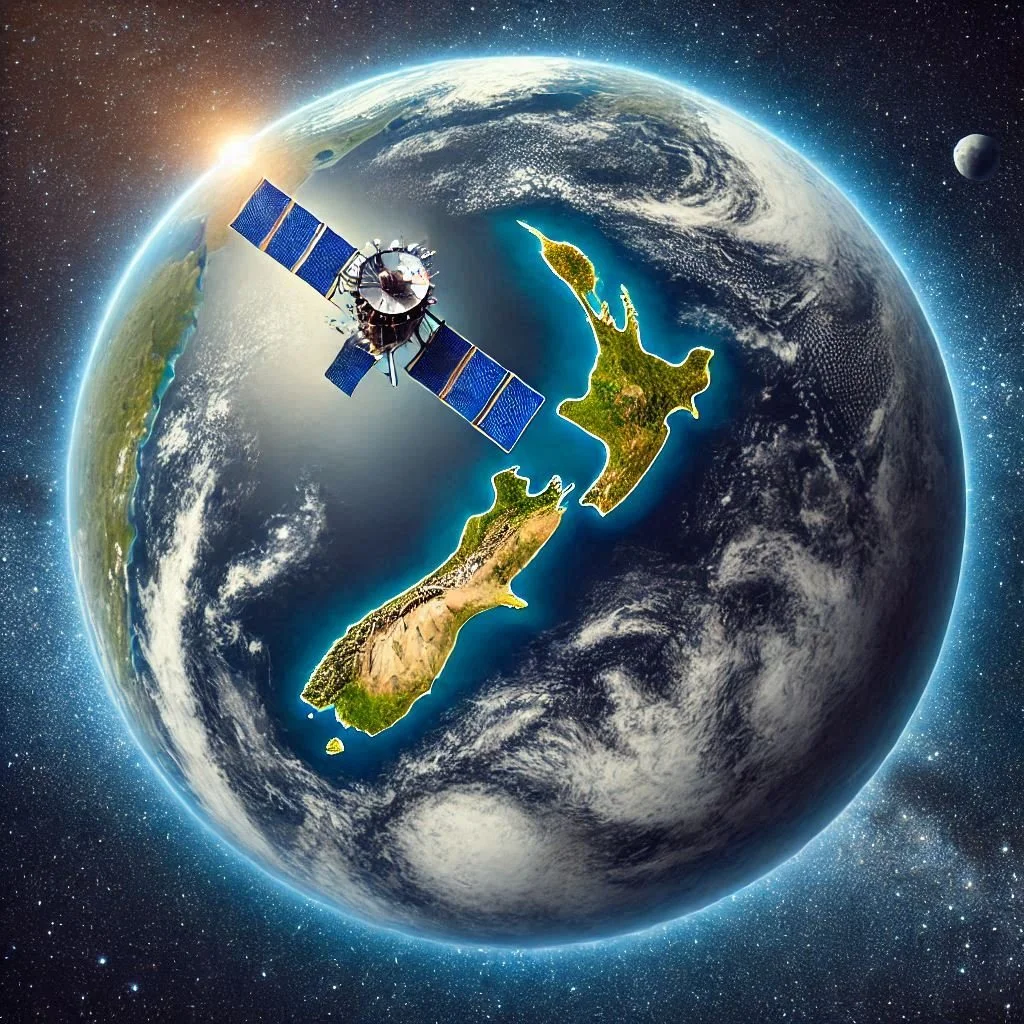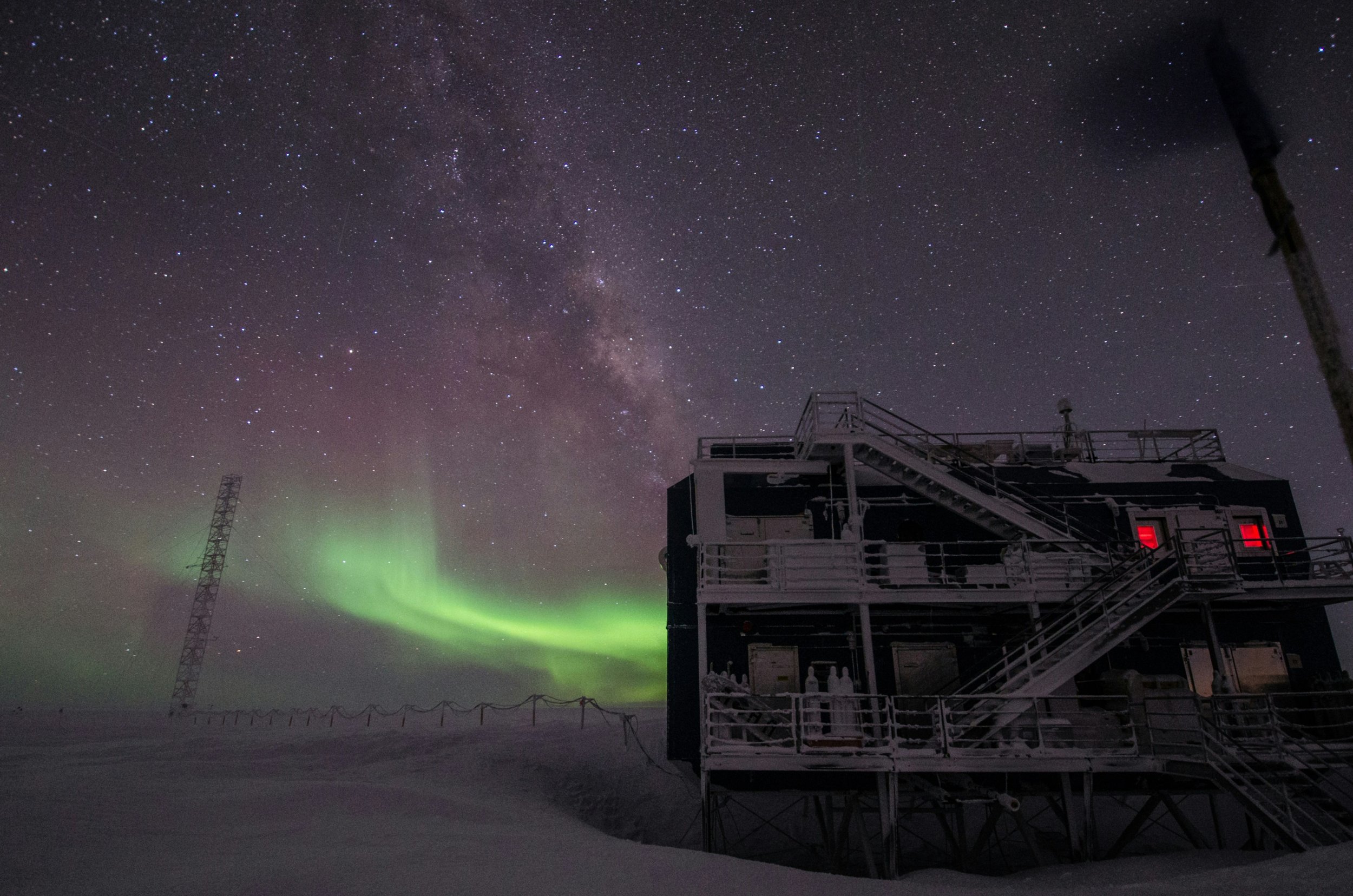Articles
How Many Everyday Items Rely on GNSS Technology?
Global Navigation Satellite Systems (GNSS), including GPS, Galileo, GLONASS, and BeiDou, have quietly become part of everyday life. What started as a military and aviation tool now supports a wide range of consumer and industrial applications we engage with daily. While most people associate GNSS mainly with car navigation or professional surveying, its impact stretches much further.
Rocket Propulsion Technologies: Past, Present, and Future
Rocket propulsion has been essential to every milestone in space exploration, allowing humanity to escape Earth’s gravity, reach orbit, and go beyond. From the earliest chemical rockets of the mid-20th century to today’s advanced systems, propulsion technology has steadily improved, becoming more powerful, efficient, and reliable. These advances have not only made space access more common but have also opened new doors for deep space missions, satellite deployment, and commercial spaceflight.
The Top 10 Largest Rockets in Space Exploration
Space exploration has always pushed the boundaries of human ingenuity, and few achievements exemplify this more than the development of super heavy-lift rockets. These immense machines form the backbone of humanity’s reach into space, launching astronauts, satellites, and cargo far beyond Earth’s atmosphere. Each is a remarkable feat of engineering, representing decades of research, innovation, and ambition.
Satellite Communication Frequency Bands and What They Are Used For
Satellite communication is vital for connecting the world, supporting everything from television broadcasts and broadband internet to military coordination and emergency responses. At the heart of these systems are radio frequency bands—specific parts of the electromagnetic spectrum, each with unique characteristics and uses.
End-of-Life Management in Geostationary Space, the Role of the Graveyard Orbit in Satellite Disposal
As the space industry expands, managing satellites after their mission ends is just as crucial as launching them into orbit. Satellites in geostationary orbit (GEO) deliver essential services, communications, weather forecasting, and broadcasting, but each one eventually reaches the end of its operational lifespan. When that occurs, engineers must find a safe and responsible method to remove them from active orbital paths.
The solution? The "graveyard orbit."
The Top 10 Oldest Satellites in Orbit
Satellites are crucial to our daily lives, supporting everything from GPS navigation and telecommunications to weather monitoring and scientific exploration. But before today's advanced satellites and large mega-constellations, early satellites laid the foundation for all we understand about space-based technology. Launched during the Cold War and the early space race, many of these historic spacecraft are still quietly orbiting Earth decades later. They no longer operate, but their presence tells a story of ambition, innovation, and rapid progress in aerospace engineering. These orbiting relics are not just debris; they are remnants of humanity’s first steps into the cosmos. In this article, we examine the ten oldest satellites still in orbit, exploring their original missions, the legacy they leave behind, and the remarkable era they helped define.
What Happens to Rockets After They Launch? Stages, Recovery, and the Future of Reuse
When a rocket launches into the sky, all eyes are on the roar of engines and the dramatic liftoff. It’s an incredible moment, but what follows is just as fascinating. As the rocket climbs higher, it begins a carefully timed sequence of events: shedding stages, changing velocity, and eventually deploying its payload. Sometimes, parts of the rocket even return to Earth for reuse. Each component plays a vital role in getting the mission safely and accurately to space. Understanding what happens after liftoff helps us appreciate the complexity behind every launch and emphasises the growing importance of reusability and space debris management. In this article, we’ll explore what really happens to rockets once they’ve left the pad.
International Collaboration on the ISS: What Comes Next After Its Retirement
The International Space Station (ISS), a symbol of global cooperation and scientific progress, has been humanity's orbital base for over twenty years. Functioning as a centre for pioneering research and international teamwork, the ISS has led to discoveries that benefit life on Earth and opened doors for further space exploration. Nonetheless, the station is approaching the end of its operational life, with retirement anticipated by the early 2030s.
As we prepare for the ISS’s decommissioning, attention has shifted to the future of human presence in low Earth orbit (LEO) and beyond. This article explores what lies ahead, emphasising the rise of commercial space stations, plans for lunar exploration, and the enduring spirit of international cooperation collaboration.
How to Defend Earth from Asteroids and Meteorites
The chance of an asteroid or meteorite hitting Earth has long been a topic of both scientific research and public interest. While serious asteroid impacts are rare, their potential damage is significant enough to require thorough defence strategies. Thanks to advances in technology and global cooperation, humanity is becoming better equipped to handle these space threats.
Commercial and Military Uses of Cislunar Space
Cislunar space, the area between Earth and the Moon, has become a key focus for both commercial and military interests. Its strategic value is highlighted by increasing investments in space exploration, resource harvesting, and defence capabilities. Several commercial opportunities in cislunar space exist.
Case Study: Vulnerability of the Pacific Islands to Space Weather
Space weather—disruptions in the space environment caused by solar activity—poses serious challenges to modern societies. For the Pacific Islands, a region heavily dependent on satellite communications, navigation, and power supplies, the effects of space weather can be particularly severe. This article examines the unique vulnerabilities of the Pacific Islands to space weather, highlighting the possible consequences, mitigation approaches, and the vital importance of preparedness in this remote yet interconnected region.
Why are geo satellites so large?
Geostationary Earth Orbit (GEO) satellites are the workhorses of global communications, weather forecasting, and broadcasting. Positioned approximately 35,786 kilometres (22,236 miles) above the Earth's equator, these satellites maintain a fixed position relative to the Earth's surface, enabling continuous service to the same geographic area. One striking feature of GEO satellites is their substantial size. Compared to satellites in Low Earth Orbit (LEO) or Medium Earth Orbit (MEO), GEO satellites are often considerably larger in size. This article examines the factors that determine the size of GEO satellites, as well as the engineering and operational requirements that influence their design.
10 Space Innovations Now Used in Everyday Life
Space exploration has spurred some of the most ground breaking technological advancements, many of which now find practical applications in daily life. Since 1958, NASA has developed over 2,000 technologies, the European Space Agency (ESA) has contributed more than 150 innovations, and the Indian Space Research Organisation (ISRO) has added over 300 advancements. These innovations, designed initially to support missions beyond Earth, have evolved into practical applications, enhancing various aspects of modern living. From medical breakthroughs to communication technologies, the influence of space-driven innovation is profound. Here are ten extraordinary technologies that emerged from the quest for space exploration and now enrich life on Earth.
Why Are LEO Satellites Small?
Low Earth Orbit (LEO) satellites, typically operating at altitudes ranging from 160 to 2,000 kilometres (99 to 1,200 miles) above Earth, have become a cornerstone of modern space operations. These satellites are widely utilised in various applications, including Earth observation, broadband internet, and IoT connectivity. One defining characteristic of LEO satellites is their relatively small size compared to their counterparts in higher orbits, such as geostationary (GEO) satellites. But why are LEO satellites designed to be small? This article explores the engineering, economic, and operational factors that contribute to the compact nature of LEO satellites.
Collaboration in Space: How International Cooperation Drives Innovation
One of humanity's greatest accomplishments is space exploration, and it is becoming more and more obvious that international cooperation is the most effective way to meet the challenges of space exploration. Global academic institutions, governments, private businesses, and space agencies are collaborating to advance science and technology. This collaborative strategy encourages creativity, lowers expenses, and speeds up development, allowing humanity to accomplish things that would be impossible for anyone organization to do on its own.
Antarctica as a Gateway to Space: Parallels in Extreme Environment Exploration
Even though Antarctica and space are very different, they have a lot in common. Both are harsh, remote settings where surviving necessitates cutting-edge technology, creative problem-solving, and cross-border cooperation. Antarctica has been a testing ground for space exploration technologies and methods for many years, offering important insights that help close the gap between the frozen Earth and the universe.
The Science Behind Rocket Launch Windows and Timing
Timing is crucial in space exploration, where even minor misjudgements can lead to mission failure. The concept of "launch windows," or when rockets can be launched to achieve their intended objectives, is essential for this precision. Identifying these windows is laborious, as complex factors like orbital mechanics, mission goals, and weather conditions affect them.
Regulating Outer Space: Tackling the Complexities of Satellite and Launch Policies
The space industry is expanding at a rate never seen before, driven by the launch of more rockets and ambitious satellite mega-constellations. This increase in activity emphasizes the pressing need for all-encompassing and progressive regulations to control space use. Regulatory challenges have come into sharper focus as nations and private enterprises compete to gain a foothold in this quickly growing field. It takes intricate, well-coordinated solutions to solve problems like orbital crowding, frequency allocation, and the environmental impact of launches. Developing efficient regulations is getting harder and harder, requiring international cooperation to guarantee the fair and sustainable use of space.
Space Providing an Operational Edge in Combating Illegal Fishing in the Southern Ocean
Encircling the icy expanse of Antarctica is one of Earth’s most pristine and biologically rich marine ecosystems. It is home to rare species like Antarctic cod, krill, and Patagonian toothfish, which are essential to both the local food chain and the larger marine biodiversity of the planet. However, illegal, unreported, and unregulated (IUU) fishing poses a growing threat to this fragile ecosystem. In addition to endangering marine life, these unlawful activities jeopardise global conservation efforts. Space technologies have emerged as a crucial tool to combat IUU fishing, transforming how authorities monitor, enforce, and protect these isolated waters.
Solar Flares: The communication killer
Despite being essential for life on Earth, the Sun is a source of immense activity that can occasionally damage or degrade the technology that enables civilisation. Among the most dramatic solar phenomena are solar flares, powerful bursts of radiation caused by sudden energy releases from the Sun’s magnetic fields. Coronal Mass Ejections (CMEs) often accompany these eruptions, affecting communication, navigation systems, and even power grids. As our reliance on space-based technologies grows, we must understand solar activity and its effects.
Pacific Launch Locations: Catalysts for Global Space Exploration
The Pacific region has emerged as a pivotal hub for global space exploration, hosting some of the most strategically significant launch sites. These locations are integral to advancing satellite deployment, interplanetary missions, and defence operations, due to their unique geographic position and cutting-edge technological infrastructure. With access to a variety of orbital pathways and safe oceanic recovery zones, Pacific launch sites cater to both commercial and scientific endeavours.
From Antarctica to Space: How Satellites Enable Life and Science in Earth's Harshest Frontier
Antarctica, the coldest and most remote continent on Earth, is a place of extremes. With temperatures only just reaching 10°C in the summer plunging below -40°C in the winter, hurricane-force winds, and a desolate, icy expanse, it challenges human endurance and ingenuity. The weather in Antarctica can be highly variable and frequently conditions change drastically. Despite its harsh environment, it is as a hub for scientific study with a network of permanent bases and temporary camps run by different countries. Satellites are a critical enabler of these activities, a vital component that keeps life and work going in this harsh environment.
What Orbits Are Best for Satellites?
Satellites are indispensable tools that power everything from global communication to environmental monitoring. One of the most critical decisions in satellite design and mission planning is choosing the orbit. The orbit determines a satellite's coverage area, resolution, and operational capabilities. But not all orbits are created equal—different missions require different orbital characteristics. This article explores the various types of orbits, their characteristics, and which ones are most suitable for specific satellite applications.





















